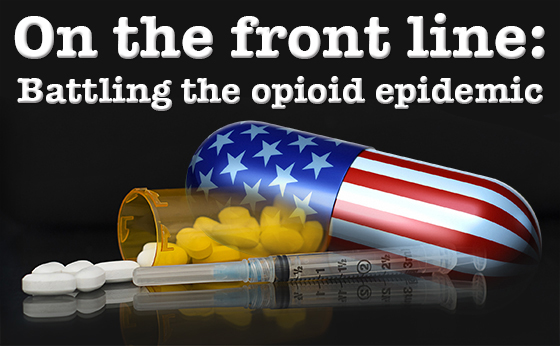|
June 2018
Battling the opioid epidemic: A roundup of news and information
Consider a patient's alcohol use when screening for opioid use disorder
 Did you know that approximately 1 in 5 opioid overdoses are alcohol related? That’s why it’s so important to screen for alcohol use disorder when assessing the risk of opioid use disorder. The Centers for Disease Control and Prevention recently issued a fact sheet on alcohol screening for people who consume alcohol and use opioids. The CDC also developed a new portal detailing the effects of drinking alcohol on your health. Did you know that approximately 1 in 5 opioid overdoses are alcohol related? That’s why it’s so important to screen for alcohol use disorder when assessing the risk of opioid use disorder. The Centers for Disease Control and Prevention recently issued a fact sheet on alcohol screening for people who consume alcohol and use opioids. The CDC also developed a new portal detailing the effects of drinking alcohol on your health.
Blue Cross develops opioid resource guide for employers
Blue Cross Blue Shield of Michigan has developed an opioid resource guide to help employers navigate the opioid epidemic. It includes a wide range of information including flyers on the following topics:
- Opioid 101 — key facts about opioids and how to prevent opioid misuse
- Medication safety, storage and disposal
- List of opioid resources
To access it, go to bcbsm.com/engage and scroll down to “Opioid resources.”
SAMHSA publishes guidance on using medications to treat opioid use disorder
The Substance Abuse and Mental Health Services Administration  has published guidance to help expand health care providers' understanding of using medications to treat people with opioid use disorder. Treatment Improvement Protocol 63, Medications for Opioid Use Disorder, reviews the use of the three U.S. Food and Drug Administration-approved medications to treat opioid use disorder: has published guidance to help expand health care providers' understanding of using medications to treat people with opioid use disorder. Treatment Improvement Protocol 63, Medications for Opioid Use Disorder, reviews the use of the three U.S. Food and Drug Administration-approved medications to treat opioid use disorder:
- Methadone
- Naltrexone
- Buprenorphine
TIP 63 is the latest in a series of topic-specific best-practice guidelines that SAMHSA has developed to help educate and inform health care professionals of the most up-to-date practices for treating opioid use disorder. For more information, click here.** You may also want read the column on medication-assisted treatment by Dr. William Beecroft, medical director of behavioral health, in the March — April issue of Hospital and Physician Update.
Using checklists can help prevent opioid overdose and drug diversion
In the May — June issue of Hospital and Physician Update, guest columnist Manveen Saluja, M.D., discusses how using a checklist can help prevent opioid overdose and drug diversion. You can read it by clicking here.
**Blue Cross Blue Shield of Michigan doesn’t own or control this website
| 
